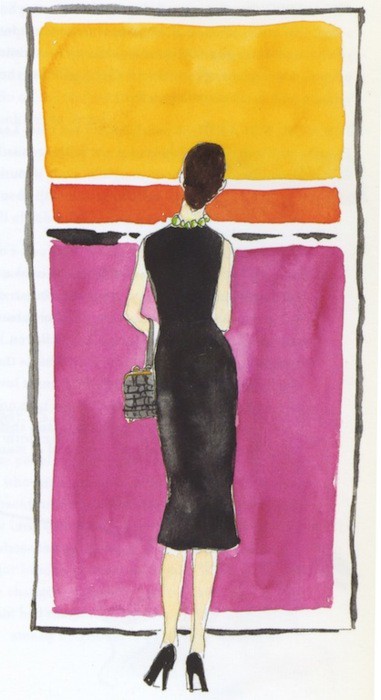
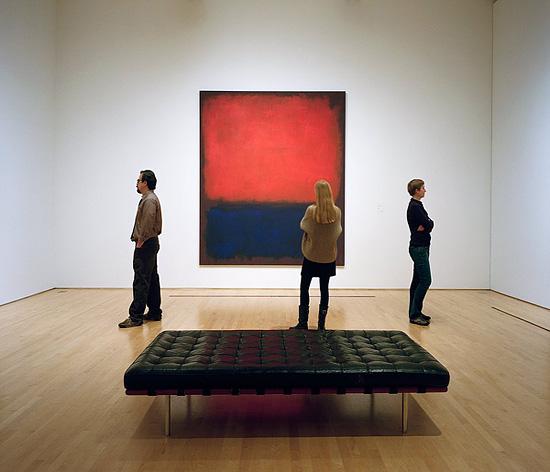
You may have asked yourself before, "What's up with people just standing there, staring at Rothko's?" Surprisingly, it's not just because they're pretty paintings. Perhaps you didn't know a few things about this color-field painter and his art:
1) Rothko was deeply influenced by color theories first developed in the 17th & 18th centuries; 2) His paintings were quite large in size, and were meant to be viewed "up close and personal"; 3) It was Rothko's intention that viewers have a sensory experience with his paintings.
First off, let's talk color theory. It's not something we think about much, but the color wheel was invented by Isaac Newton in the 1660's -- you know, ROYGBIV, complementary/contrasting/primary colors, etc. Johann Wolfgang von Goethe took it a step further in the 19th century and found that reds and oranges created warmth, while blues and greens created coolness. This emotional impact of color perception, harmony and discord, is what interested Rothko, and he and other Abstract Expressionists began to play with color as a means of expanding our experiences. Rothko believed, “The most interesting painting is one that expresses more of what one thinks than of what one sees.”
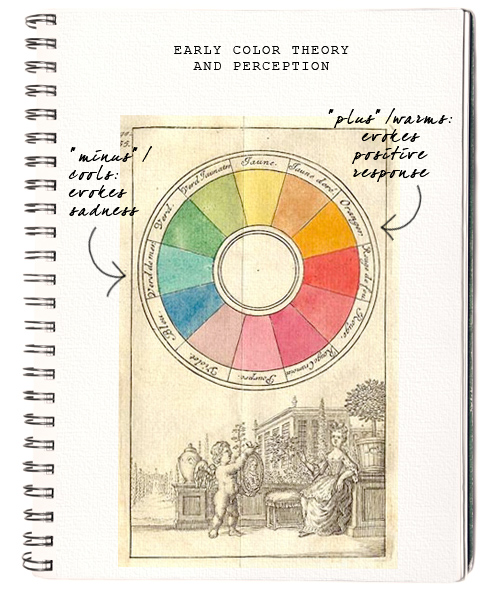
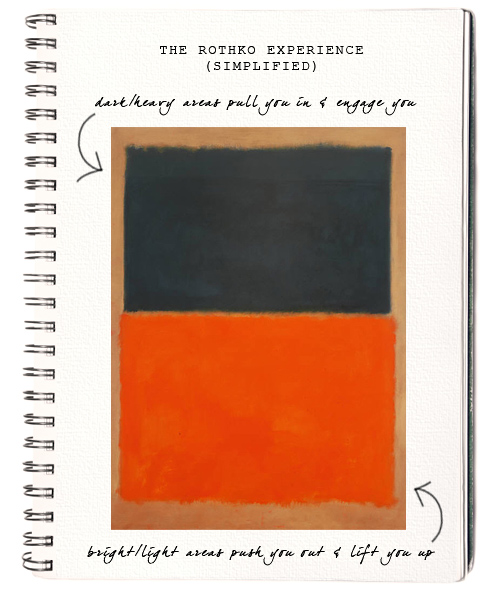
"Just as the hues of a sunset prompt feelings of elation mingled with sadness or unease as the dark shapes of night close in, so Rothko's colors stir mixed feelings of joy, gloom, anxiety or peace. Though the forms in the painting seem simple at first glance, they are in fact subtly complex. Edges fade in and out like memories; horizontal bands of 'cheerful' brightness have 'ominous' overtones of dark colors". ~ Dorothy Seiberling, LIFE, 1959
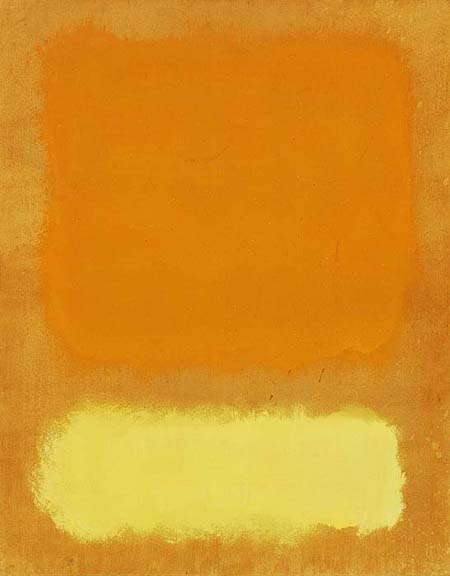
Untitled, 1968
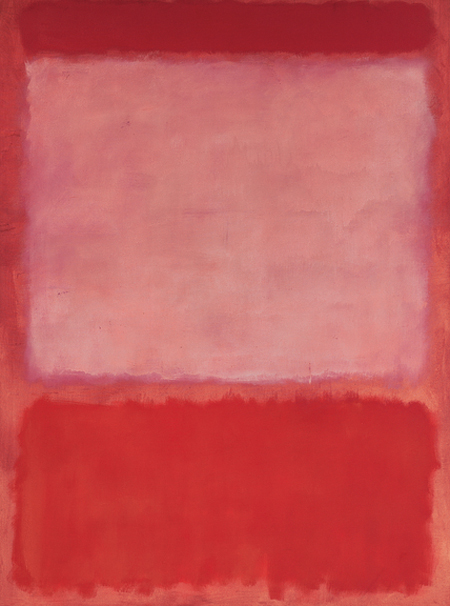
No.16, 1960
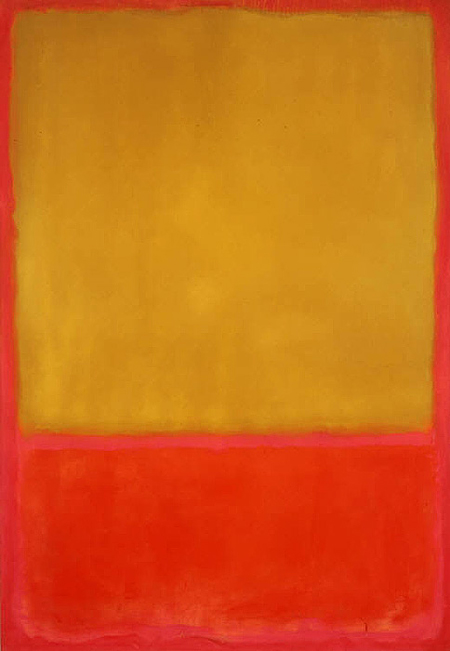
Ochre and Red on Red, 1954
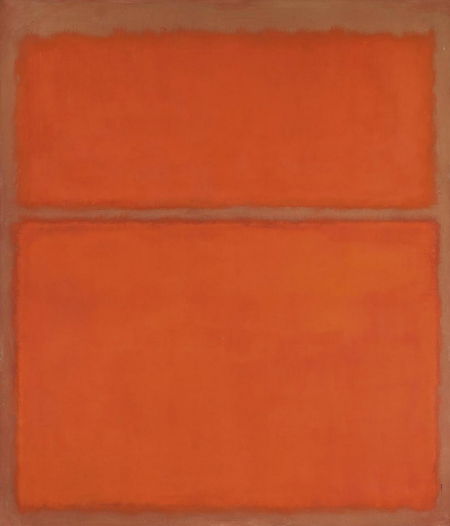
Untitled, 1961
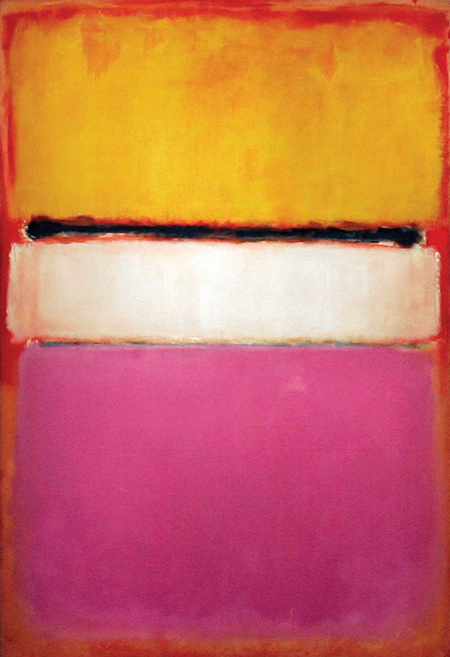
White Center (Yellow Pink and Lavender on Rose), 1950 *Formerly owned by Rockefeller, this painting recently sold for $72.8 million!
So now perhaps you know a little something more about those "color-blocked" paintings that everyone seems to love, and maybe few know all the reasons why! I bet next time you're at an exhibit with a Rothko, you'll find yourself as one of those just standing there staring at it, too...just as the artist intended.
Thanks for joining me today, hope to see you soon over at the small shop [shop talk] blog!

0 comments:
Post a Comment